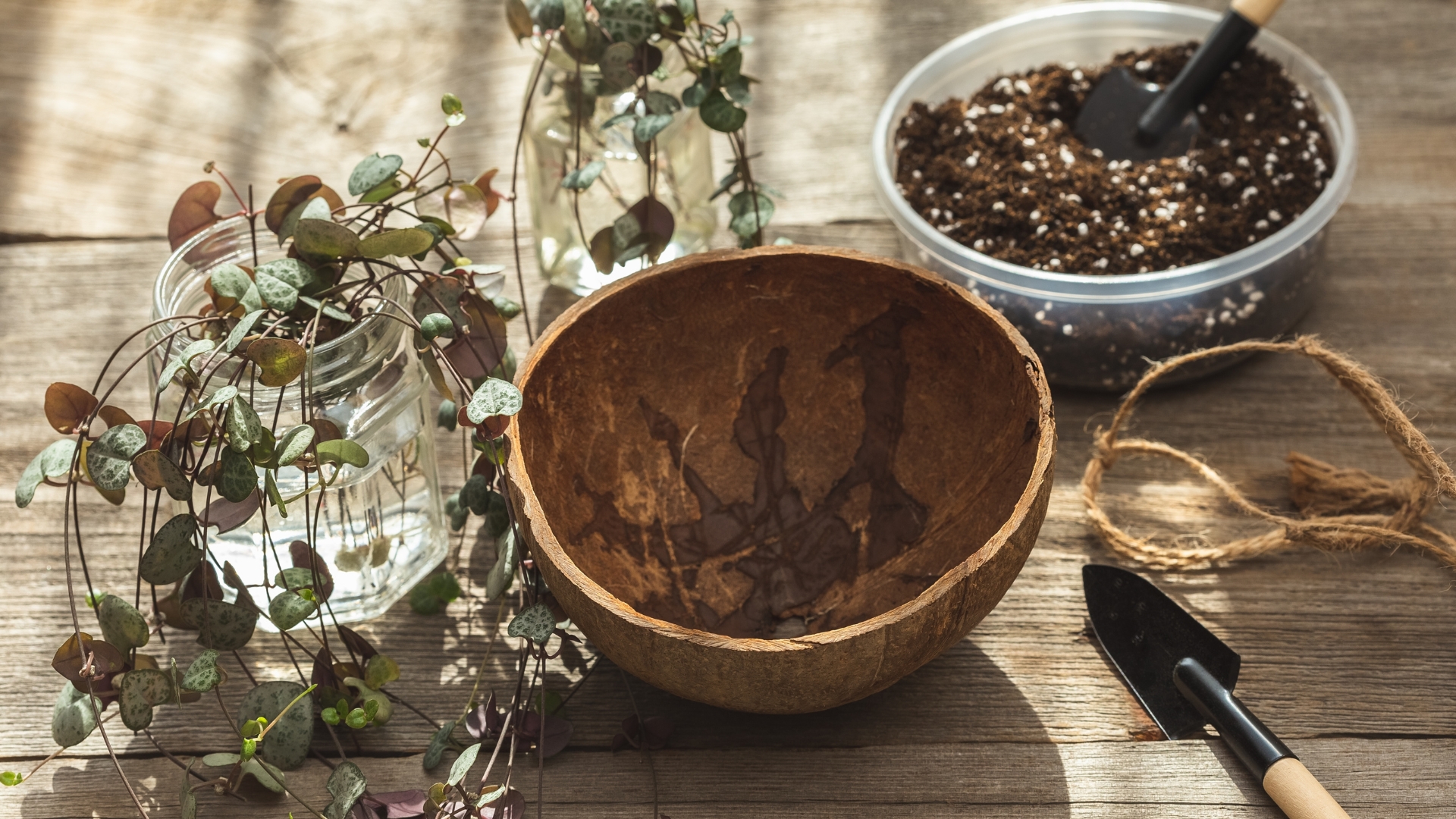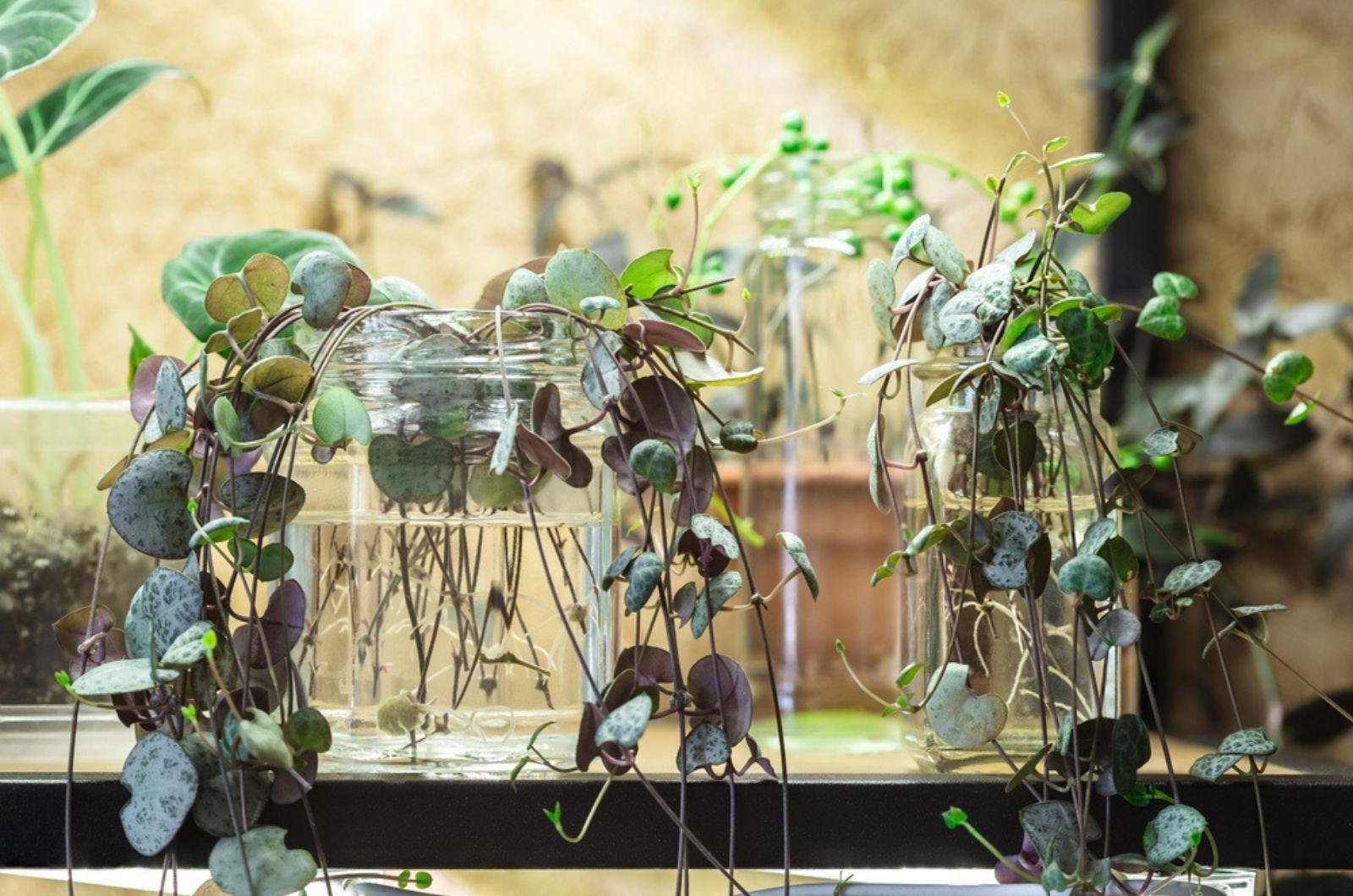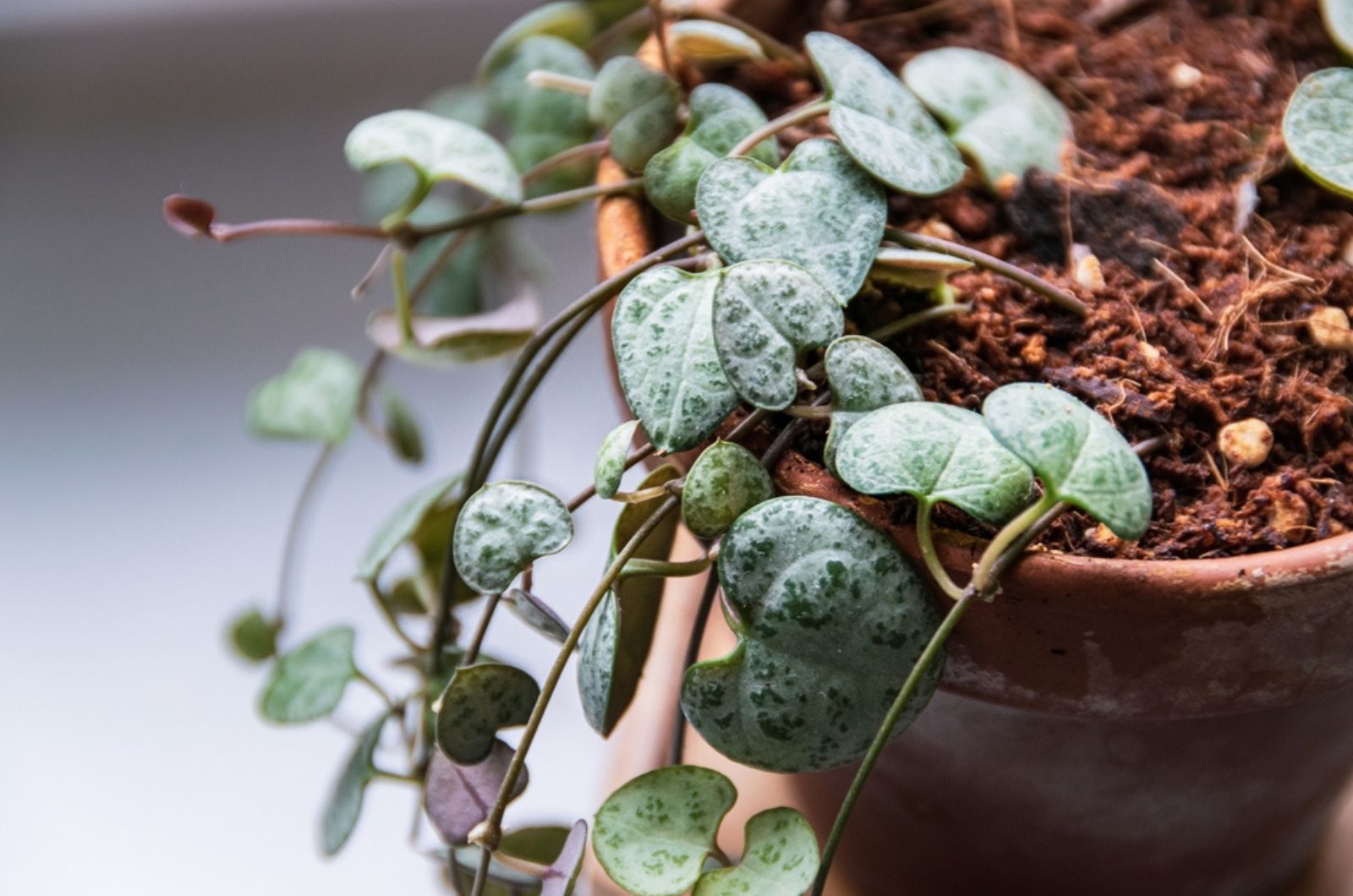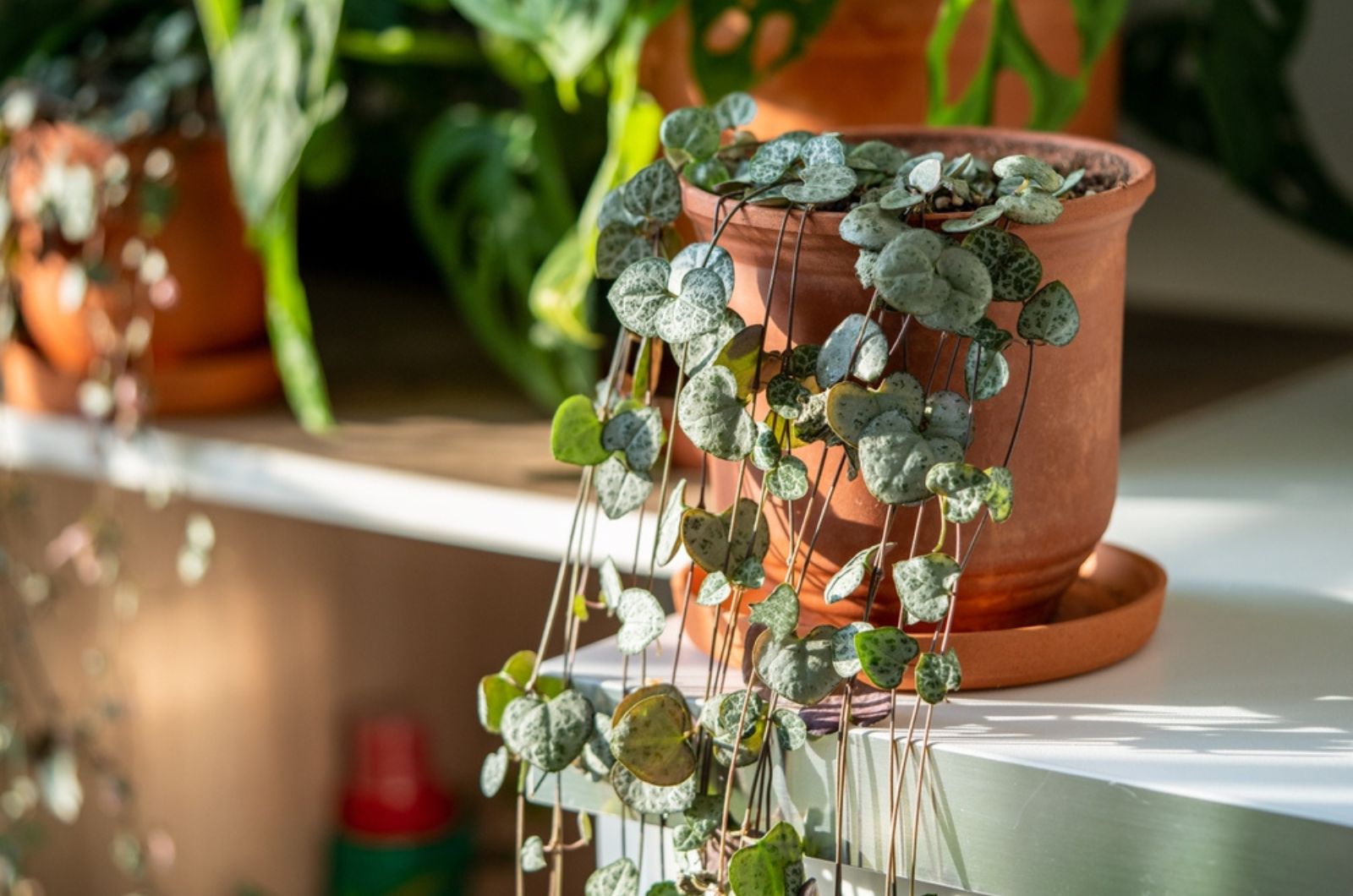The heart-shaped leaves of the string of hearts plants adorn households worldwide. This is one of the most famous trailing plants and it’s renowned for its low care requirements.
Another benefit of this beautiful plant is that it can be easily propagated and you don’t need any special skill or equipment to complete this task.
In this article, I’ll show you how to propagate string of hearts in 2 easy ways and give you some tips for keeping the plant happy and healthy.
Let’s get started!
Propagating String Of Hearts In Water
The first method you can use to multiply this lovely species is taking the cuttings and rooting them in water.
All you need to do is cut a healthy stem off your string of hearts just above the node at a length of about 4 inches. Always use sharp and sanitized scissors or any other cutting tools when removing any sections of your plant.
Now take a transparent vase or a jar, fill it with clean and fresh water, and remove the bottom leaves from the cutting.
The next step is to insert the cutting, making sure the string of hearts node is below the water line.
The stem should be kept in water for approximately 6 weeks but you need to refresh the water every couple of days to prevent pathogens from developing.
After a few weeks, you should notice the new string of hearts has roots, and you’ll need to plant them in the growing substrate when they’re about an inch long.
The roots will need some time to develop and adapt fully to their new surroundings, and it’s essential to ensure all the conditions for healthiest growth.
Water propagation is easy and super fun because you can see the entire rooting process when the cuttings are kept in a transparent container.
Soil Propagation
Another way to root string of hearts cuttings is directly in the growing substrate. Many growers use this method because the roots are stronger compared to those that develop in water.
Just like in the previous method, you need to take stem cuttings from your string of hearts, and they should be approximately 4 inches long.
To encourage root development, you can apply rooting hormone to the cut end before putting it in the growing substrate.
When you insert the cutting, check if the node is placed about an inch below the soil line.
The next step is to cover the cuttings with a humidity dome or the bottom of a plastic bottle to trap humidity and promote root growth.
Check on the cuttings regularly and keep the soil moist; put the plant in a permanent spot when the roots are well established.
Laying the string of hearts cuttings on the soil surface is another way to get more of these plants for free. The cutting will uptake nutrients and water from the growing substrate and generate new roots.
The Best Time To Propagate String Of Hearts
These trailing succulents root easily but you should take the cuttings during the growing season, which is in spring and summer.
Your plant is generating new shoots during this period and it has enough energy for growth.
It’s possible to propagate in the fall and winter but your string of hearts cuttings will need more time to develop roots.
A humidity dome can help you maintain warmth and humidity around the cuttings and help you get more string of hearts plants!
Why Grow String Of Hearts
The stunning appearance is definitely the most common reason why growers decide on string of hearts plants. But that’s not the only reason.
As mentioned, these plants are easy to maintain; I keep my string of hearts in full sun where most of my other houseplants can’t grow.
You should pay attention not to overwater your string of hearts because this is a succulent plant and it doesn’t need a lot of water to thrive.
If you ensure favorable conditions, your string of hearts will reward you with lovely purple blossoms during the warmer months.
Propagation will help you get new string of hearts plants for free and now that you know how to do it, grab your gardening gloves and embark on this exciting journey!




